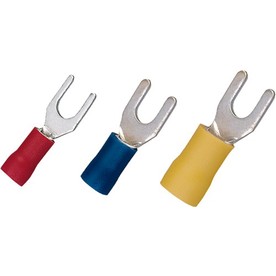DesignatedDecoy
Well-Known Member
- Joined
- Oct 17, 2013
- Messages
- 98
- Reaction score
- 2
Hey friends,
I did my best to keep this as short and sweet as possible.
Heres my situation: Ive hit a roadblock in my electric build. I went with the simplest controller setup, since all I want to do is free up my kitchen stove. I can foresee myself getting a new enclosure and adding a PID. Also, Im using 8 awg wire since the window is so far from the outlet and, as good as it smells, Im trying to minimize the brewery smell in the house by keeping the kettle close to the window.
Anyway, Heres the problem: The 8 gauge wires are not properly fitting into the 30amp double pole switch. The only thing that was working was to strip the wire, split the copper wires into a v-shape, then wrap each side of the v-shape wrap around either side of the screw. What are your thoughts on this? Should I leave it the way it is and wrap it in electrical tape? Or should I tin the wires then wrap it in electrical tape? Or is there another double pole switch that I can buy that will work better with 8 gauge wire?

Can I get at least a Few credible opinions if its not too much trouble?
Here is a picture of it so far and then a picture I drew of the wiring diagram. Would you comment on these pictures as well? Double check them, etc. I don't see any problems with the pictures but let me know if you want more at different angles or whatever.
and thank you Thank You THANK YOU! Love this site, what a great reference for learning.
DISCLAIMER: I am not an electrician!! Im just am an average guy who has done a ton of research. Get everything you see and do checked, doubled checked, triple checked. Then call in an electrician to check it again.


I did my best to keep this as short and sweet as possible.
Heres my situation: Ive hit a roadblock in my electric build. I went with the simplest controller setup, since all I want to do is free up my kitchen stove. I can foresee myself getting a new enclosure and adding a PID. Also, Im using 8 awg wire since the window is so far from the outlet and, as good as it smells, Im trying to minimize the brewery smell in the house by keeping the kettle close to the window.
Anyway, Heres the problem: The 8 gauge wires are not properly fitting into the 30amp double pole switch. The only thing that was working was to strip the wire, split the copper wires into a v-shape, then wrap each side of the v-shape wrap around either side of the screw. What are your thoughts on this? Should I leave it the way it is and wrap it in electrical tape? Or should I tin the wires then wrap it in electrical tape? Or is there another double pole switch that I can buy that will work better with 8 gauge wire?

Can I get at least a Few credible opinions if its not too much trouble?
Here is a picture of it so far and then a picture I drew of the wiring diagram. Would you comment on these pictures as well? Double check them, etc. I don't see any problems with the pictures but let me know if you want more at different angles or whatever.
and thank you Thank You THANK YOU! Love this site, what a great reference for learning.
DISCLAIMER: I am not an electrician!! Im just am an average guy who has done a ton of research. Get everything you see and do checked, doubled checked, triple checked. Then call in an electrician to check it again.




































![Craft A Brew - Safale S-04 Dry Yeast - Fermentis - English Ale Dry Yeast - For English and American Ales and Hard Apple Ciders - Ingredients for Home Brewing - Beer Making Supplies - [1 Pack]](https://m.media-amazon.com/images/I/41fVGNh6JfL._SL500_.jpg)
















 Thanks for your help. I'll pay it forward.
Thanks for your help. I'll pay it forward.


